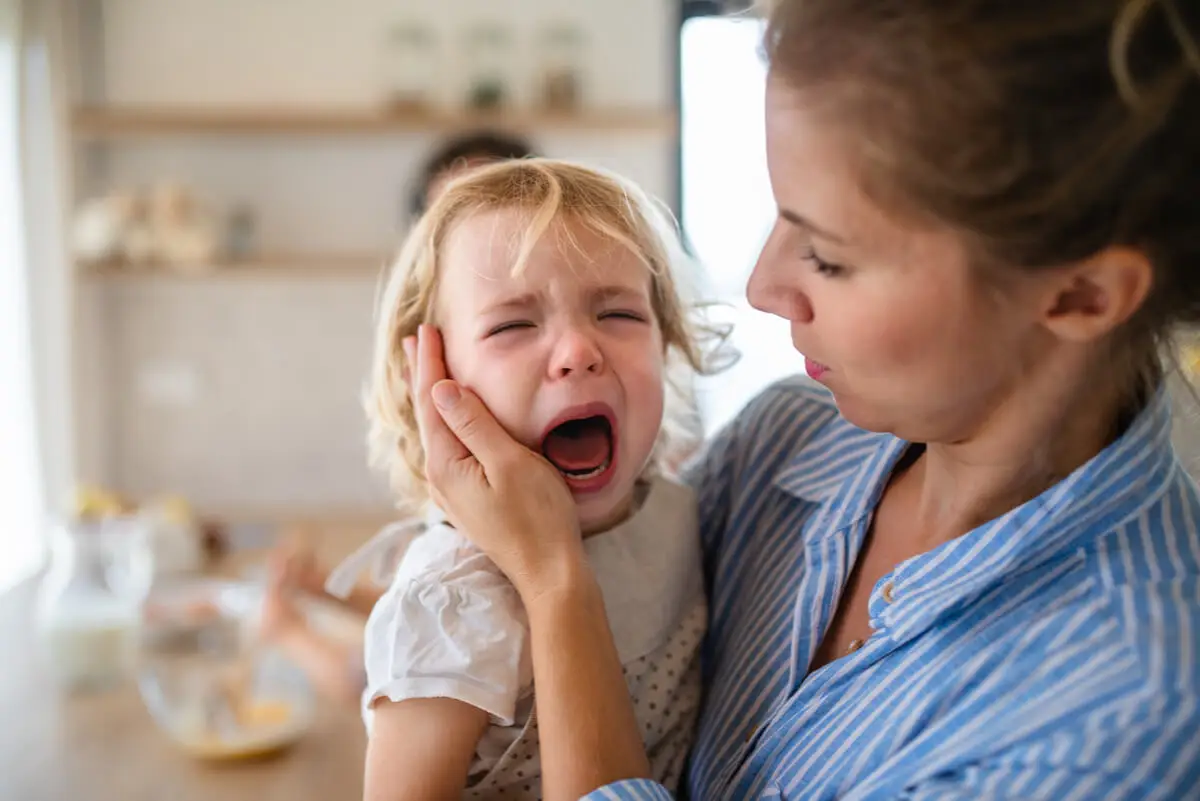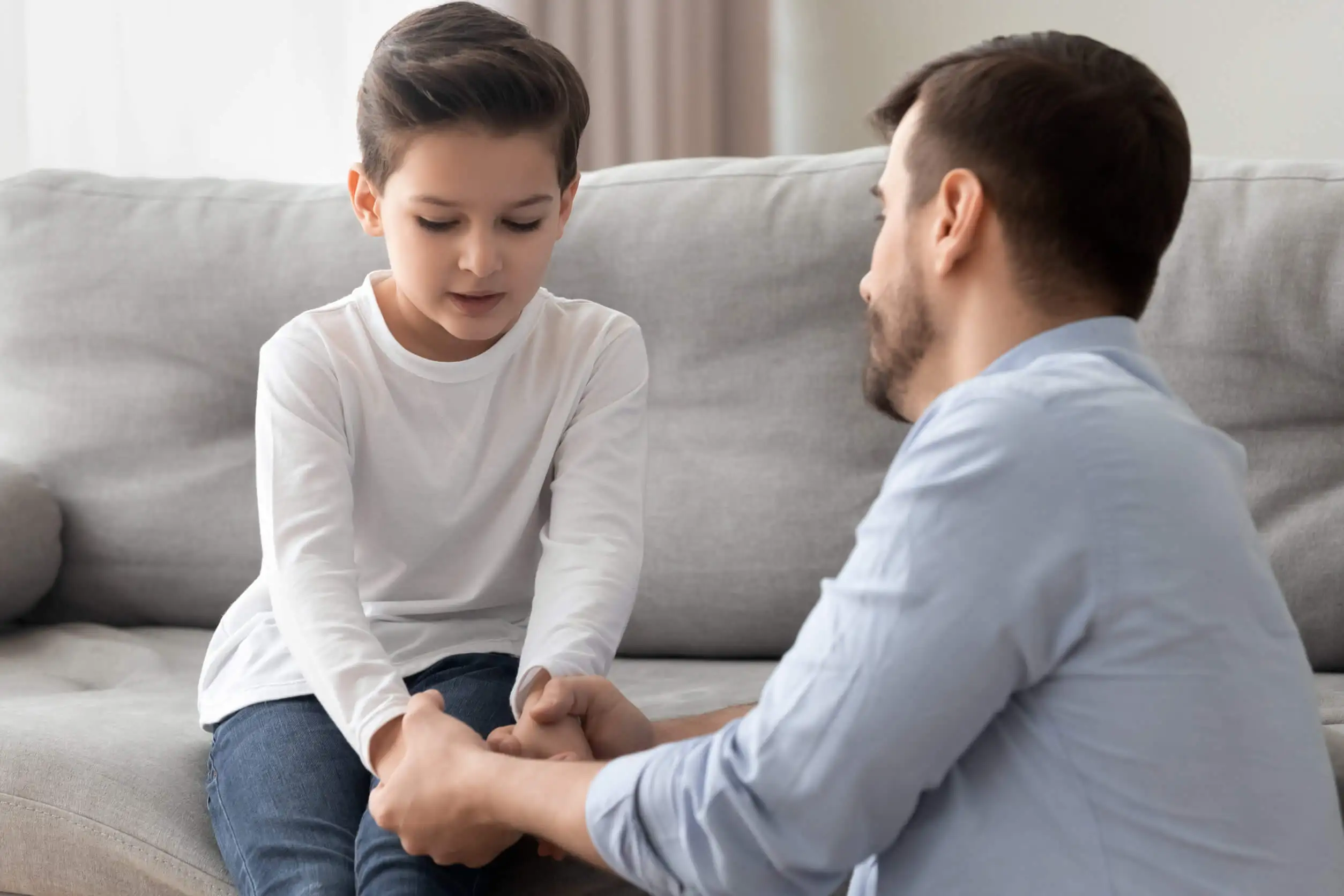Positive Discipline: What Is It and How Can You Use It With Your Children?


Written and verified by the psychologist Elena Sanz
If you’re a parent, one of your first tasks is to ask yourself what you want to get out of the parenting process. What are your goals and expectations? Based on this answer, you will be able to select a parenting style that best suits your family. If your goals include raising a child who’s autonomous and decisive, happy, emotionally intelligent, and who enjoys a healthy and strong bond with you, then positive discipline is your choice.
This parenting approach moves away from traditional authoritarian methods based on punishment and hierarchical family relationships. Instead, it promotes the emotional connection between parents and children, mutual respect and the development in the child of social skills and personal resources that allow him/her to become a healthy and functional adult.
Sounds good, doesn’t it? The truth is that numerous studies support these educational practices as some of the best alternatives available. However, it is not a simple path: it requires large doses of patience, perseverance, and personal work.
There are no shortcuts when it comes to parenting, but the results of postive parenting methods will speak for themselves.
What is positive discipline?
Positive discipline includes a set of democratic parenting practices that allow us to guide and accompany the development of children with love and respect. This educational trend has been promulgated mainly by psychologist Jane Nelsen and can be applied by parents, educators and anyone who plays an important role in a child’s life.
To better understand what it is based on, here are some of its main principles and objectives:
- To develop a sense of belonging in the child. Infants respond better and are more willing to cooperate if there is a connection with authority figures and if they feel welcome in their environment (whether at home or school).
- Be respectful, kind, and firm when parenting. Positive discipline rejects authoritarianism and aggression towards children, but it also does not promote permissiveness. It is possible to set boundaries in a healthy and loving way.
- It encourages autonomy and the learning of skills in the youngest children. The ultimate goal will be to guide children to learn to fend for themselves, to have their own criteria and a sufficient amount of personal resources for life.
- Encouragement and positive reinforcement are prioritized. The focus is on the behaviors that we do want to teach and not so much on pointing out bad behaviors. The reason behind a “misbehavior” is analyzed and solutions are sought.
- Communication and empathy are fundamental. They’re the basis for creating a bond of love and mutual respect with children.
How to apply positive discipline with your children
If you can internalize these principles and make them a way of life, the the rest will easily follow. For example, if you remember that the priority is mutual respect, it will be natural for you to accompany your child’s tantrum instead of yelling or shaking him.
However, it is normal that at the beginning we do not know where to start applying these principles. Therefore, here are some suggestions.

We think you may also enjoy reading this article: What Are Parenting Classes and What Do You Learn There?
Clarify your expectations
It’s important that children know what is expected of them in order to behave accordingly. Therefore, try to explain to your child what the expectations are in each situation.
Use simple, age-appropriate language. Try to make it clear. “You have to behave” is too ambiguous. Better explain, for example, “You have to pick up your toys when you finish playing”.
It’s also necessary to anticipate situations. If, for example, you’re going to eat out at a restaurant, you can explain to your child that he/she must be seated at the table or that he/she must speak in a low tone of voice so as not to disturb other people.
Offer reasonable explanations
“Because I said so” is not enough if what we want is for children to learn and not just obey. When you give a directive or make a rule, your child needs to know and understand why. This will make them much more willing to cooperate.
“We have to leave the park now so we have time to eat dinner and get you to bed on time so you won’t be sleepy at school tomorrow” is a simple but necessary explanation. This doesn’t imply that the child will willingly agree to go home, but it will help him to feel taken into account and to understand that you are looking out for his or her well-being.
Establish consequences, not punishments
In positive discipline, punishments, humiliation, or aggression have no place. For a child to learn from a “bad behavior” it isn’t necessary to yell at them, get angry with them, or take revenge by giving them an example. Applying logical and natural consequences is much healthier and more effective.
This means that the consequence must be directly related to the behavior and must transmit a lesson. If your child doesn’t eat his pr her vegetables and you take away his cell phone, this is not related and teaches nothing.
Natural consequences are those that occur without adult interference and allow learning through cause and effect. For example, if your child doesn’t pick up his or her toys, he may not find them the next time he or she wants to play. Or they may even step on them by accident and break them. This naturally teaches them to be careful and organized.
Logical consequences are set by adults, but they meet the two parameters mentioned above. If the child plays with the ball inside the house after being told not to do so, the ball can be confiscated for a few days.
Understand what your children’s behavior communicates
Adults tend to focus only on whether children are misbehaving or behaving well, but we do not stop to understand what their behavior communicates. Misbehavior may indicate that the child is seeking attention because they feel they are missing it, that they’re frustrated or angry about something, or that they’re going through a difficult situation that we may not have noticed.
Identifying the causes, understanding, and empathizing is critical when applying respectful and positive parenting. Take a moment to try to understand your child, validate their emotions and look for solutions that will help them with what they are trying to communicate. This will be much healthier and more effective than just reproaching bad behavior.
Encourage appropriate behaviors
Focusing on the behaviors we do want is one of the most effective keys to positive discipline. To do this, we have to promote good behaviors, explaining what we expect from the child and rewarding their approaches. For example, you can use behavior modification charts and reward systems.
It’s also necessary to get used to positive statements. Instead of saying “don’t yell”, we can say “speak more quietly”. If your child has colored in a book that was not meant for coloring, you can give him or her a sheet of paper and say “we use these sheets of paper for coloring instead.”

Like this article? You may also like to read: Authoritarian Parenting Style: Characteristics and Possible Effects on Children
Positive parenting promotes autonomy and the acquisition of resources
Finally, it’s critical to spend time equipping children with tools and resources that will help them become more autonomous. Some of the most important aspects may be the following:
- Educate them in assertiveness and social skills, so that they learn to communicate and relate to each other in a respectful and effective way.
- Teaching emotional intelligence, so that they can understand their emotions and manage them properly.
- Encourage autonomy and self-esteem, offering small tasks and responsibilities that they can assume and carry out by themselves.
- Show them how to use resources that help them regulate themselves in challenging moments. For example, breathing, the calm corner or the emotional thermometer are simple and very useful alternatives.
Positive discipline benefits the whole family
Raising children with in positive discipline is very beneficial for children, as they grow up emotionally healthy, confident, and independent. But it’s also very beneficial for parents, as it helps them connect with their children, create strong bonds, and avoid many conflicts and unpleasant situations at home.
Start applying these principles and you will soon see the results.
All cited sources were thoroughly reviewed by our team to ensure their quality, reliability, currency, and validity. The bibliography of this article was considered reliable and of academic or scientific accuracy.
- Carroll, P., & Brown, P. (2020). The effectiveness of positive discipline parenting workshops on parental attitude and behavior. The Journal of Individual Psychology, 76(3), 286-303.
- Carroll, P. (2021). Effectiveness of Positive Discipline Parenting Program on Parenting Style, and Child Adaptive Behavior. Child Psychiatry & Human Development, 1-10.
- Nelsen, J. (2011). Positive discipline: The classic guide to helping children develop self-discipline, responsibility, cooperation, and problem-solving skills. Ballantine Books.
This text is provided for informational purposes only and does not replace consultation with a professional. If in doubt, consult your specialist.








